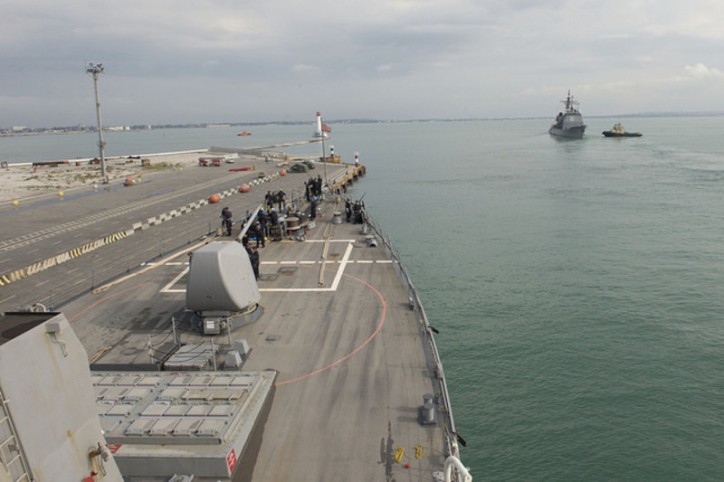Naval vessels from Georgia, Romania, Turkey, Ukraine and the US have departed the port of Odessa and the nearby Western Naval Base to participate in the free-play phase of Exercise Sea Breeze 2017 in Ukraine.
Sea Breeze is a multinational maritime exercise held in the Black Sea and co-hosted by the US and Ukraine.

The guided missile cruiser USS Hue City departs Odessa, Ukraine, for the at-sea phase of Exercise Sea Breeze 2017. Photo: courtesy of Navy by petty officer 3rd class Weston Jones.
The exercise is carried out with the intention of improving the interoperability of participating nations and strengthening maritime security in the region.
Air, land, sea and amphibious forces from 17 countries worldwide are taking part in Exercise Sea Breeze this year.
The exercise is conducted in two phases, with the first phase comprising knowledge-based scenario training and the second phase focusing on the ability of participating forces to react to different scenarios.
US Navy 6th Fleet Task Force 65 deputy commander captain Matthew Lehman said: “During the initial phase, the surface ships focused on command-and-control and platform interoperability to allow for better coordination during the more advanced underway phase. They knew what to expect.”
"During the initial phase, the surface ships focused on command-and-control and platform interoperability to allow for better coordination during the more advanced underway phase."
Lehman further said that the initial phase of the exercise will help integrate individual units into one organisation, while the second phase will be more complex.
More than 30 naval vessels are taking part in the four-day free-play phase of Exercise Sea Breeze 2017, which will see the ships both operate and undergo collective training in the Black Sea.
Divers are made to carry out search-and-rescue and explosive ordnance disposal missions during the exercise, and other units have to perform anti-submarine warfare, submarine warfare and air warfare missions.
Lehman noted that the free-play phase is intended to test the aviation and amphibious components, and the US Marines have to operate with their Ukrainian and Turkish counterparts, performing visiting, boarding, and search-and-seizure missions at sea, while employing other tactics on land.
Source: Naval-Technology